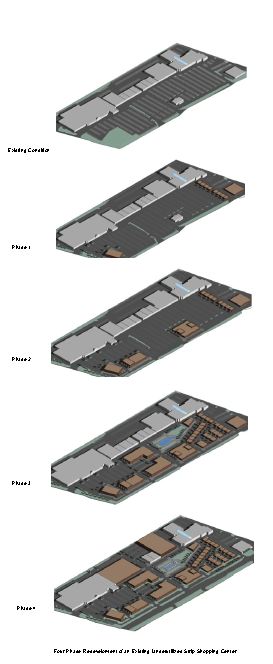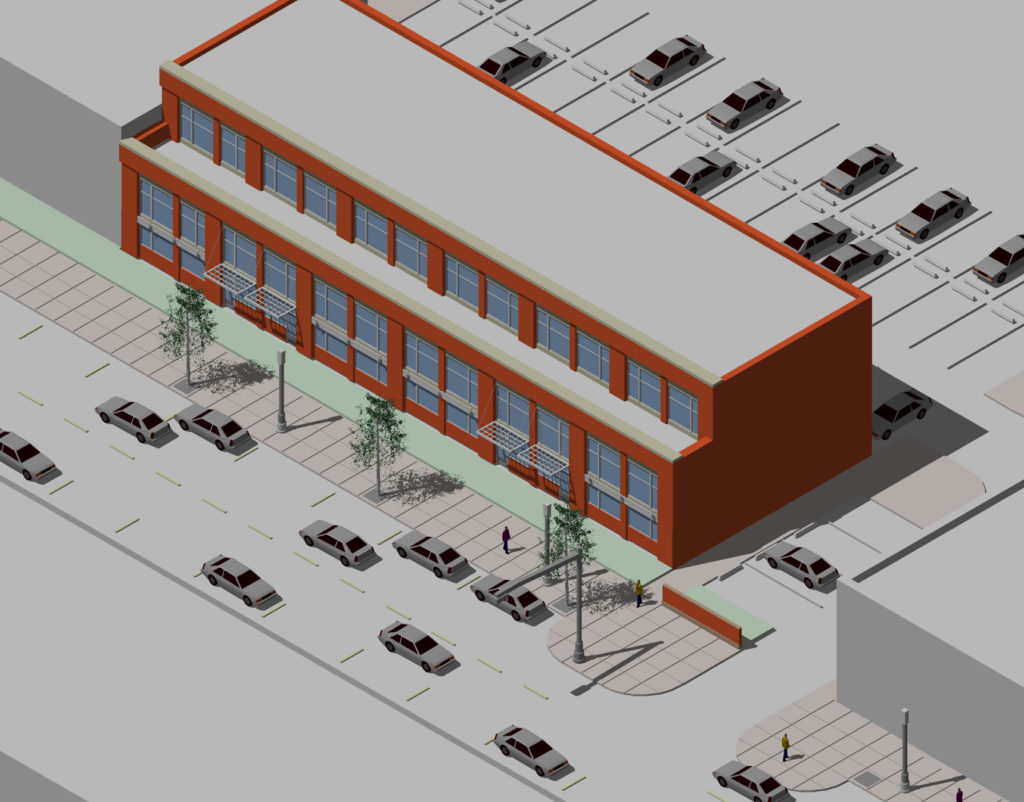Must we shop? Our capitalistic society is based on consumption. When the economy gets tough we are given tax breaks and told to “go out and spend” to revitalize the economy. Shouldn’t we be saving?
During the “boom years” entertainment retail was seen as the salvation for downtowns. It had been said that Times Square had become “Disneyfied” and sanitized. Was this change positive or negative? Should we as architects embrace “theming” as we emerge from the economic malaise of the past few years? What does “theming” say about public space in America?
One of things that is noted about Disneyland and many “themed” or controlled environments is that they are fashioned to eliminate the car. This was noted by James Howard Kunstler in his seminal text of 1996, The Geography of Nowhere. When times were good one could make the argument for that level of control of our main retail areas. Now that is not the case. The auto-generated corridor is now the most pressing development pattern for urbanism. It does not lend itself well to contrivances such as theming. As much havoc as the car has put upon this environment, we still must deal with its after-effects in a productive manner.
In order to prepare our cities’ corridors for the new economy we need to stop thinking retail and start thinking storefronts. What’s the difference? Flexibility and the satisfaction of facing the new reality of how are cities are developing. In a previous post we discussed how our reliance upon auto-oriented development has shaped the linear nature of our cities. In this post we begin to think about what the functions are that will shape this new way of doing business.
To successfully regenerate our linear-based environments, we must rethink the pattern of development and the overall organization of urban and suburban corridors. We have observed three key factors that are important as we begin the process of reinventing the corridor:

Rethinking the under-utilized strip shopping center, Gratiot Ave., Clinton Township, Michigan.- courtesy Archive DS
1. Establish a “node-based” identity for the corridor. Identify the “pedestrian shed” or 5 minute walking radius to designate nodal boundaries. This puts in place the necessary pre-conditions for a new kind of urbanism. Additionally, identify any areas of architectural significance as a starting point for newly defined nodes.
2. Encourage a diverse mix of functions. Revitalized retail strips should feature “impulse shops” – shoe stores, fashion, toy stores along with service stores such as barber shops, shoe repair, bakeries, dry cleaners, and community service centers. In addition, professional services (dentist offices, design firms, law offices) should be incorporated. Strip centers are not just for retail any longer. Economic conditions are forcing this situation anyway.
3. Parking. Provide ample easily accessible parking in clear, comprehensible locations while at the same time understanding the proper place of parking in the overall hierarchy of urban places. This means when new development is created the bulk of it should be situated at the rear of the development.
Once we realize that we are not going to completely urbanize many of our urban and suburban corridors we can move forward beyond thinking of superficial concepts, such as theming, which are spawned from non-sustainable economic conditions. We will also be better equipped to realize retail’s proper place among the building blocks of urbanism.

Parking allocation for new development along a corridor.- courtesy of Archive DS
